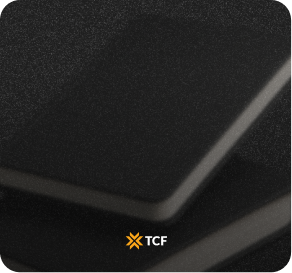The e-commerce landscape is shifting fast. Paid ads don’t behave the way they used to, SEO is no longer just about Google, and social media has evolved into a search engine of its own.
On November 13th, we hosted our webinar Inside the 2026 E-commerce Growth Mindset: What's Dead, What's Next, What Wins, where our ads, SEO and social media experts broke down what is actually changing in 2026, not just what the industry keeps repeating.
This roundup breaks down the core insights shared across ads, SEO, and social so even if you missed the session, you still get the direction you need for 2026.
1. The new economics of advertising in 2026 – Irina
Irina broke down how paid advertising has changed and why many brands lose money without noticing.
Why most brands still lose profit without realizing it
Many e-commerce brands still run Meta and Google ads like it’s 2021: too many small ad sets, tiny budgets and constant manual tweaks.
Today’s algorithms don’t reward that. They work best with:
- fewer campaigns
- broader targeting
- bigger budgets per ad set
If the system can't learn properly, it won't get satisfactory ROAS as well.
How to make smart decisions when attribution is unreliable
Tracking across Meta, Google and your backend no longer matches and that’s normal in 2026.
Instead of chasing perfect attribution, Irina recommends looking at signals that still reflect reality:
- Blended performance: compare overall ad spend to overall store revenue
- Post purchase surveys: ask buyers where they first found you
- Creative performance: CTR, hook retention, scroll stop rate
If revenue rises and your creatives engage people, the ads are working even if platforms disagree on conversions.
What modern creative testing looks like in 2026
Scaling in 2026 is not about spending more; it’s about learning faster.
Irina explained the new testing approach:
- Break each creative into parts
- Test different hooks and openings on the same base video
- Track what angle consistently wins
- Allocate 20–30% of your budget to testing every month
This helps brands discover fresh winning concepts before creative fatigue kicks in.
How to diagnose why your ad costs rise but sales don’t
Irina gave a simple checklist any brand can use:
- If CTR is low → creative problem
- If CTR is strong but still low engagement → targeting problem
- If traffic is strong but conversions are weak → landing page, offer or pricing problem
This framework helps brands find the real bottleneck fast.
How Irina would spend a 100k monthly ad budget
Her recommended split:
- 70% on proven campaigns that already convert
- 20% on testing new hooks, styles and platforms
- 10% on retargeting warm audiences
During seasonal sales, shift up to 20% toward retargeting since urgency improves conversions.
2. SEO as brand infrastructure in the LLM era – Kim
Kim explained how SEO is changing as AI systems like ChatGPT and Google’s AI Overview become part of everyday search. What’s happening right now is not just another algorithm update or trend. It’s a full shift in how people search for or interact with information.
Why traffic alone no longer shows SEO success
AI Overviews often answer questions without sending users to your site. So your traffic might go down even if your visibility is strong.
But the clicks you do get are more valuable because those users are:
- researching deeper
- closer to buying
- looking for information that AI summaries can’t fully explain
In short: lower traffic doesn’t mean worse SEO. It means the role of SEO has changed.
Why keywords matter less in 2026
AI doesn’t scan pages the way old search engines did. Instead of counting keywords, AI looks for meaning. It builds entity networks by mapping relationships between:
- your brand
- your products
- your target audience
- the topics you cover
So the question is no longer “Did you mention the keyword?” but “Are you the authority behind that idea?”
If your site doesn’t clearly communicate what your brand stands for, what it sells, and what makes it credible, AI can’t represent you properly.
What still matters is the expertise
Generic content is dead
AI ignores repetitive content. What still wins:
- real expertise
- unique insights
- trustworthy data
Mentions are the new backlinks
AI doesn't trust link exchanges, guest posts and paid links.
What it does trust:
- Trusted sources like Wikipedia
- UGC sites like Reddit and Quora
- Third party review hubs like G2, CNET, Forbes
- YouTube, because real people show real use
SEO is now the “silent branding layer”
Kim called SEO a silent branding layer because SEO is no longer just about optimizing your website, it’s about how your entire brand behaves online. AI learns about your brand from everywhere, not just from your website. Social media, marketplaces, YouTube, forums, influencer content, and even community discussions all now feed into your overall search reputation. Every time you describe a product, get a review, or earn a media mention, you’re training algorithms to associate your brand with certain qualities. This is a shift from “SEO as traffic channel” to SEO as brand infrastructure.
How to build product pages that work for people and AI
Kim explained that product pages now serve two audiences at once:
- the shopper
- the AI that will later decide when to recommend your product
Her formula:
- Write for people, structure for machines
Clear titles. Real benefits. Short paragraphs.Then add product schema with price, reviews and FAQs. - Add context, not just specs
A product description isn’t just a list of features anymore, it’s a story.
People and AI want to know why the product matters and how it’s used. - Stay consistent everywhere
Product names, materials and benefits must match across your site, Amazon, retailers and social. AI connects dots through patterns and inconsistency breaks that chain.
What Kim would focus on for a new e-com brand in Q1 2026
In 2026 she’d focus on six things:
- Strong brand entity
Make it easy for AI and people to understand who you are and what you sell. - Unique, experience-based content pieces
Publish things that show real expertise and insights that can’t be copied. - Conversion friendly writing
Natural language, FAQs, and clear explanations help both humans and AI. - Technical cleanliness
Fast site, mobile friendly, easy to crawl. - Real trust signals
Reviews, UGC, media mentions, the things AI actually pays attention to. - Presence beyond Google
AI learns from every platform — YouTube, Reddit, Wikipedia, TikTok, news, etc.
So think of SEO as your brand everywhere strategy, not just a search.
3. Social media beyond algorithms and vanity metrics – Christine
Christine lives at the intersection of organic content and paid social. She sees which posts get likes and which ones actually move revenue.
Viral does not mean valuable
A lot of brands chase:
- Memes
- Trending audios
- Performative posts
These can generate likes and comments, but very often:
- They do not connect back to the brand
- They do not build brand memory
- They do not push people to your site or store
In 2026, the brands that win are the ones that focus on value led content.
Platforms are turning into search engines
TikTok and Instagram are no longer just entertainment feeds.
Content that will matter most:
- Educational and practical
- Shows proof of usefulness, for example demos and real life usage
- Answers buyer questions and reduces risk in their decision
People come to feeds to search for:
- How something works
- Whether it is worth it
- What others really think
If your content does not help with that, you lose visibility and trust.
How strong brands blend organic and paid
The most effective brands are blurring the line between organic and ads:
- Using the same human creative in both
- Relying on:
- UGC style videos
- Founders speaking directly to camera
- Raw behind the scenes clips
- Customer reviews and testimonials
Simple rule:
- Create content
- Test it organically
- Scale what already worked as a paid campaign
No need to build a completely separate ad universe if your best content is already on your profile.
Creator led storytelling and co creation
Christine sees two big formats for 2026:
- Raw creator style videos
Not polished, not over produced. Creators show how they use the product in everyday life and talk in their own language. - Creator led product storytelling
Brands bring creators in earlier and let them shape:- Messaging
- Angles
- Language
Creators often know the audience vocabulary better than the brand team. When they lead the story, the content feels like their story, not a corporate script.
- Messaging
The next wave is co creation, where the audience and creators feel like they are building the brand story with you, not just watching from the outside.
Where to invest: TikTok and Instagram as a system
If a founder had to choose where to go deep in 2026, Christine would split it like this:
- TikTok for reach and testing
Fast discovery, new audiences, perfect for testing hooks, angles and creative formats. - Instagram for relationship and conversion
DMs, buying flows and closer connection. Use it to turn attention into customers.
Think of it as:
- TikTok to find what resonates
- Instagram to turn that into revenue
Staying authentic when everyone is trying to sound human
Authenticity is not about sounding human, it is about behaving like one.
Christine's simple approach:
- Show the process, not just the final ad
- Show the real team and real customers
- Show product evolution, including imperfect stages
- Keep your tone and actions consistent across content and customer experience
- Have a clear point of view that competitors cannot copy without looking fake
Posting daily but seeing less reach
If you are posting all the time and getting less engagement, Christine suggests:
- Step back from volume
It is not about posting five times a day. It is about having something useful to say. - Listen to your audience
Look at what they say about your brand on platforms like Reddit or in comments. Use that to decide what to talk about. - Add a share or save trigger Include at least one element that makes people want to send the post to someone or save it for later. That keeps your content alive beyond the first few hours.
What Will Really Drive E-commerce Growth in 2026
If there’s one theme across ads, SEO, and social, it’s this:
The old playbooks are breaking, but the new opportunities are bigger.
- Ads now reward learning speed, not manual control.
- SEO is shifting from keywords to brand authority.
- Social is becoming a search and trust engine, not just entertainment.
Brands that win in 2026 will be the ones that simplify, test fast, stay consistent, and show real expertise across every platform.
[[cta5]]
.jpg)

.jpg)
.jpg)



.png)


.png)




